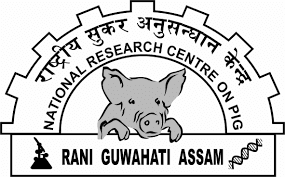Potential of Piggery Towards Increasing Farmer’s Income and Achieving SDGs
It is very well understood that piggery has tremendous potential to contribute towards attaining the vision of doubling of farmer’s income by the Government for a developed and prosperous country with healthy and gainfully employed people. Piggery could also very well fit into the rural based agricultural and livestock production systems, and can provide a better option to the farmers to mitigate the risk of production failures thereby increase the profitability in a more sustainable way. Sustainable Development Goals (SDGs) were adopted by the United Nations General Assembly on 25 September 2015 and six years since the adoption of the SDGs by the Governments, it is now well understood that piggery sector could immensely contribute not only towards achieving these SDGs. However, there exists a felt need to augment/ improve the specific aspects of piggery towards achieving the full potential of piggery sector in the country. Some of the relevant points are outlined in the following table.
Table 1. Areas which need further thrust to augment the output from piggery sector in the country and to attain the specific SDGs.
Sl. No. | Relevant SDG | Areas that need attention to achieve the SDG |
1 | SDG 1- No poverty
&
SDG 2 – Zero Hunger |
|
2 | SDG 3 – Good Health and Well Being |
|
3 | SDG 4 – Quality Education |
|
4 | SDG 5 – Gender Equality |
|
5 | SDG 6 – Clean Water and Sanitation
&
SDG 7 – Affordable and Clean Energy |
|
6 | SDG 8 – Decent work and Economic Growth
|
|
7 | SDG 9 – Industry, innovation and infrastructure |
|
8 | SDG 10 – Reduced In-equalities |
|
9 | SDG 11 – Sustainable cities and communities |
|
10 | SDG 12 – Sustainable consumption and production |
|
11 | SDG 13 – Climate Action | 1. Implementation of schemes to promote “Climate resilient pig housing”. 2. Focus on effective “Disaster management of pigs”, especially during flood period. |
12 | SDG 14 – Life Below Water |
|
13 | SDG 15 – Life on Land | 1. Implementation of schemes to utilize the barren land/ river bank as fodder production units, which will in turn provide quality feed to pig as well as become a means to prevent soil erosion. |
14 | SDG 16 – Peace, justice and strong institutions | 1. Ensure cohesive action among the institutions associated with piggery sector, as outlined under sl.no.8. 2. Also, promote capacity building of professionals, institutions and stakeholders associated with piggery sector. |
15 | SDG 17 – Partnerships for the Goals | 1. Shift the developmental focus to ‘cluster oriented’ approaches, whereby the state will be able to develop a comprehensive database for particular cluster (Private pig breeding farms in the lines of poultry). 2. Establish “Strategic co-operation with northern states” for making raw material for pig feed available in the state at affordable price. |
